SUMMARY
VENOM: Highly Toxic
PREVALENCE: Common
ACTIVE PERIOD: Active at night
KEY ID FEATURES: White and black banding with black bands thick at the top and evening out at the tail, variable across SEA including black and high white variants
BEHAVIOR: Hunts on the ground at night, moves slow but capable of aggressive strikes if surprised, generally will flee
SIZE: Small/Medium - ~1.5M
IUCN: LC - Least Concerned
OTHER: Can be mistaken with Banded Wolf Snake and other snakes from genus Lycodon
QUICK ASSESSMENT 0-10
VENOM REVIEW*
COMPOSITION: Pre & Post-synaptic neurotoxins (bungarotoxin).
LOCAL EFFECTS: High lethality potential, Almost no local effects.
GENERAL EFFECTS: Symptoms present after significant delay up to several hours with minimal local effects, possible nausea and generalized pain prior to onset of full paralysis.
TREATMENT: Antivenom.
*INFORMATION ON VENOM OBTAINED FROM WWW.TOXINOLOGY.COM
GALLERY
IMPORTANT: Many snakes have significant variance in coloration and pattern even within the same species. There can also be extreme differences in appearance from juveniles to adults so it is important to never assume you have properly identified a snake.
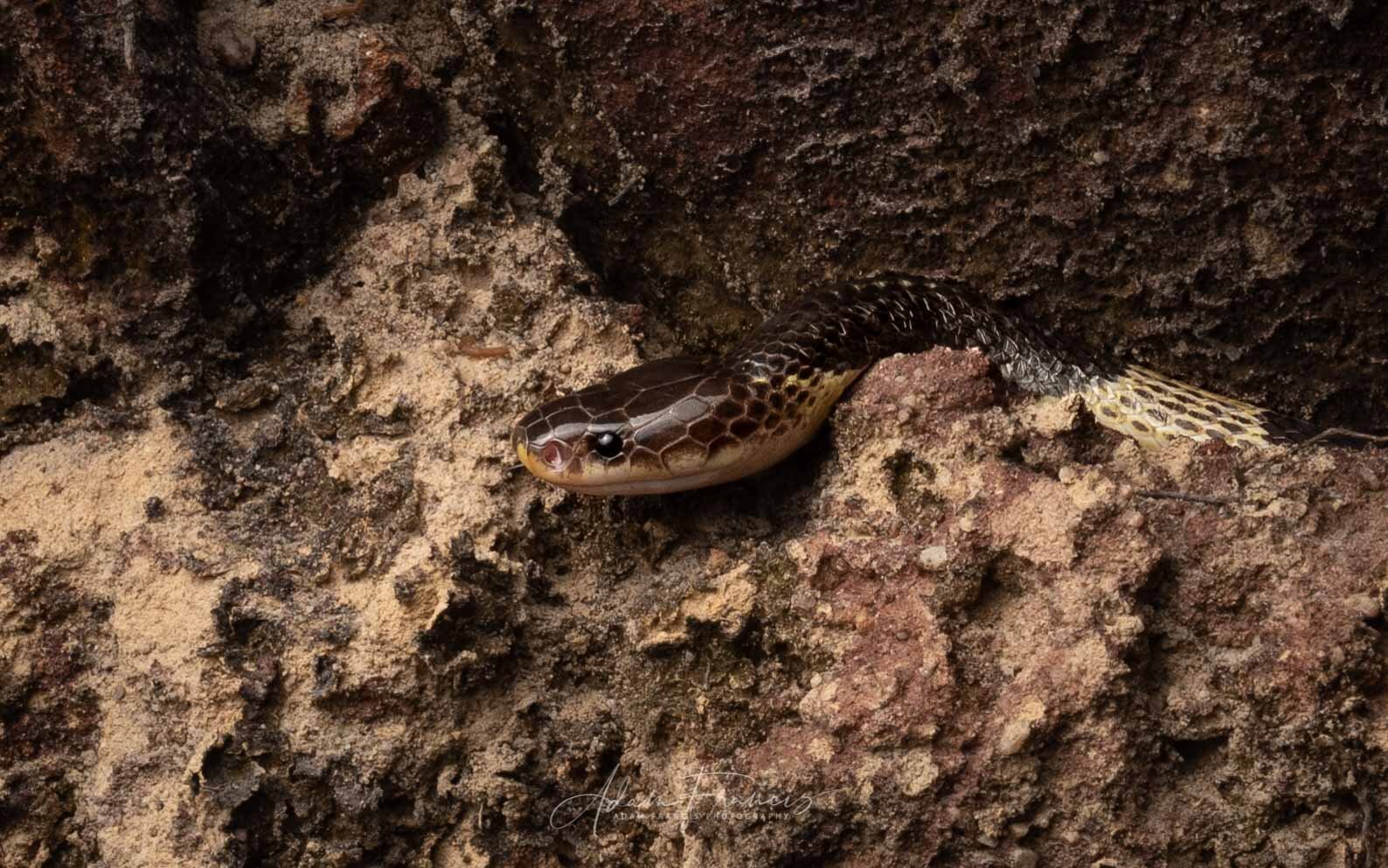
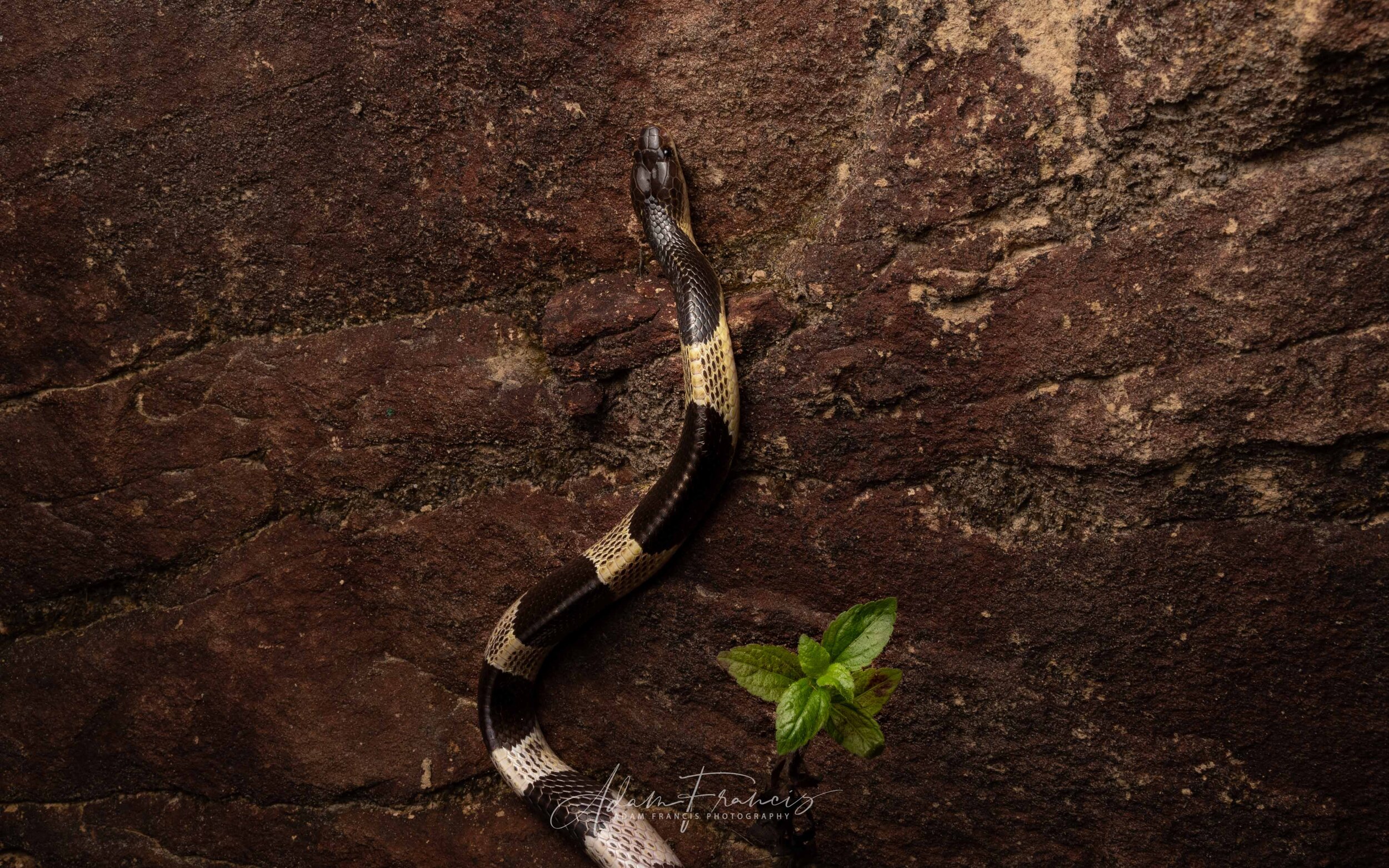
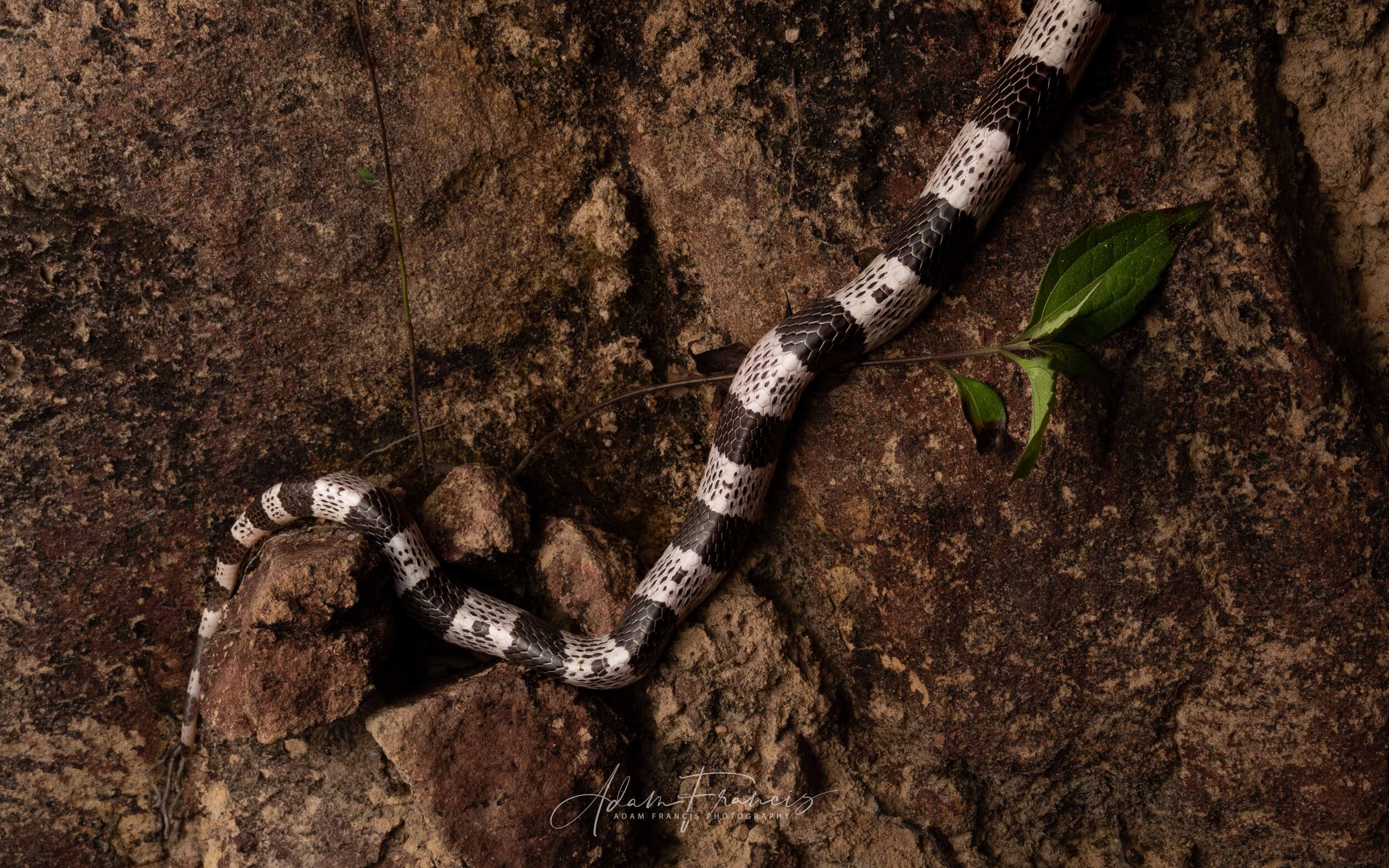
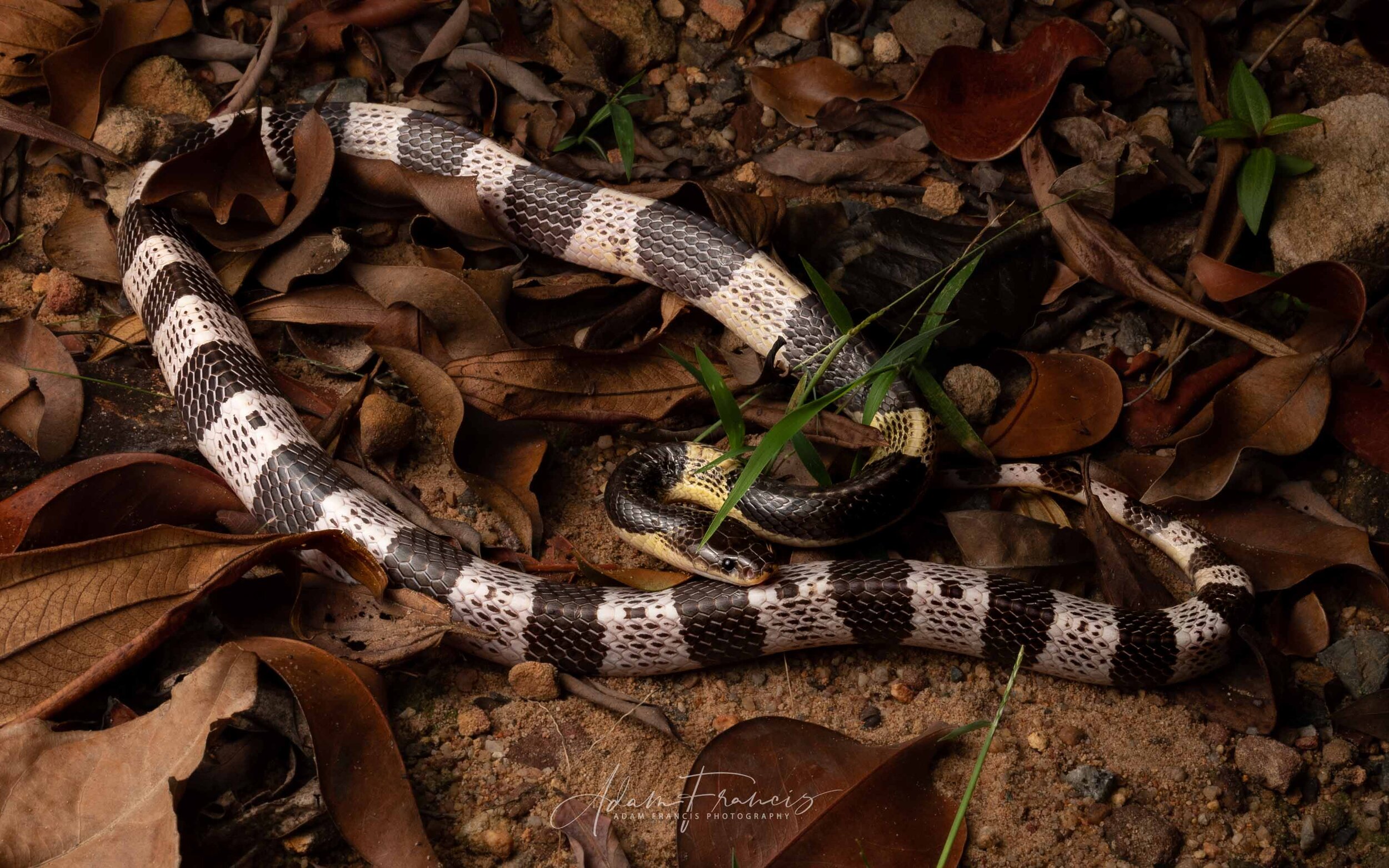
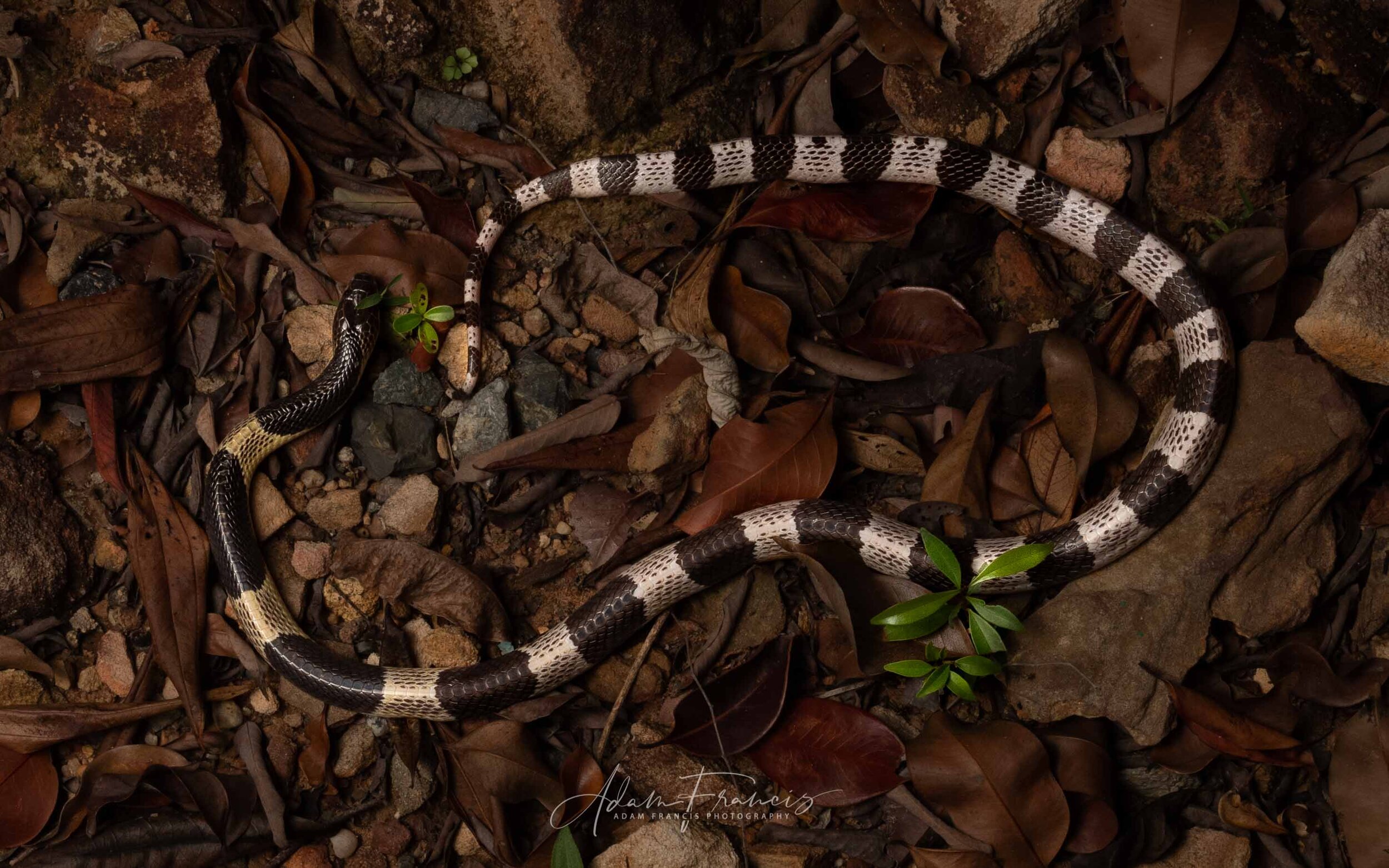
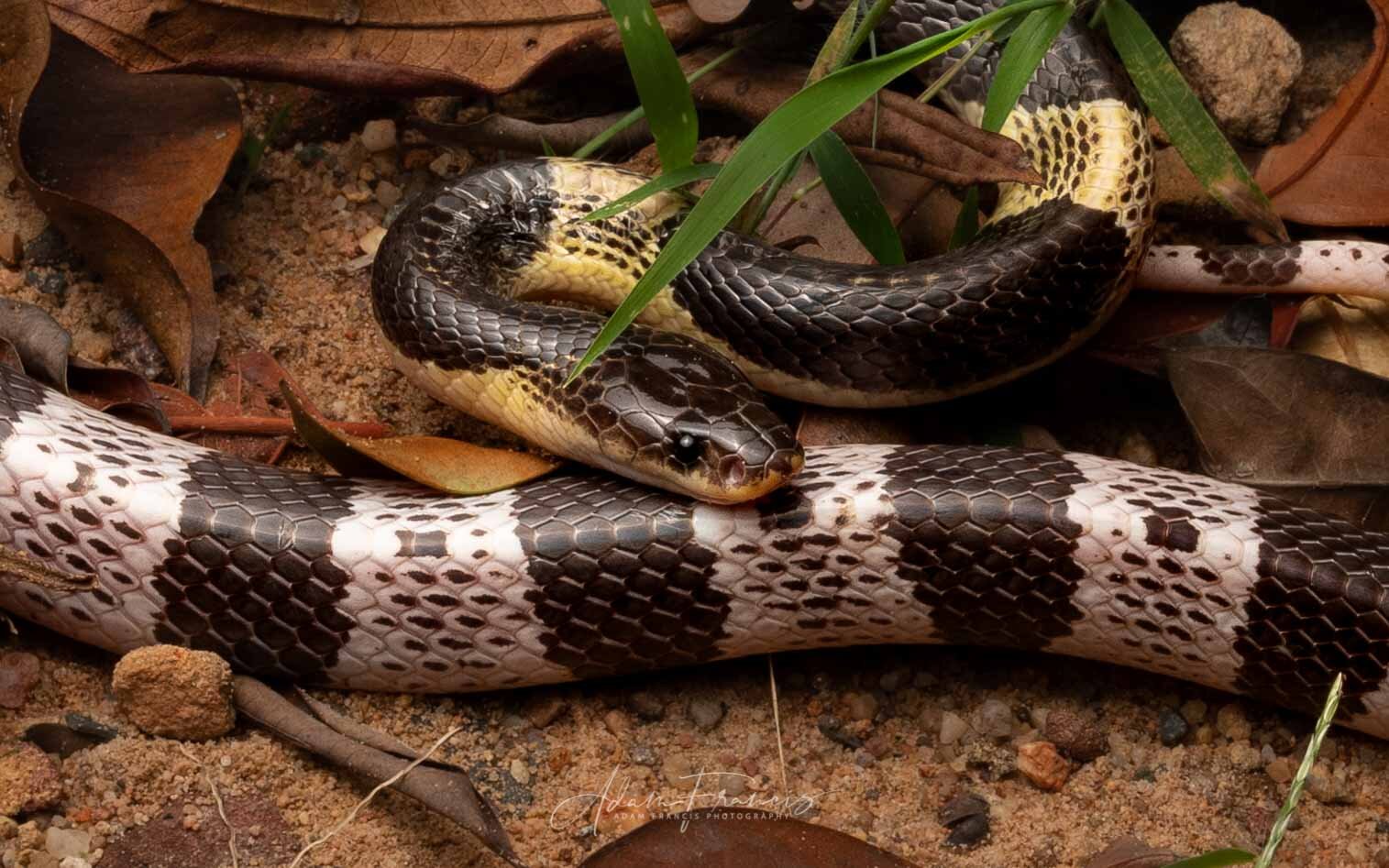
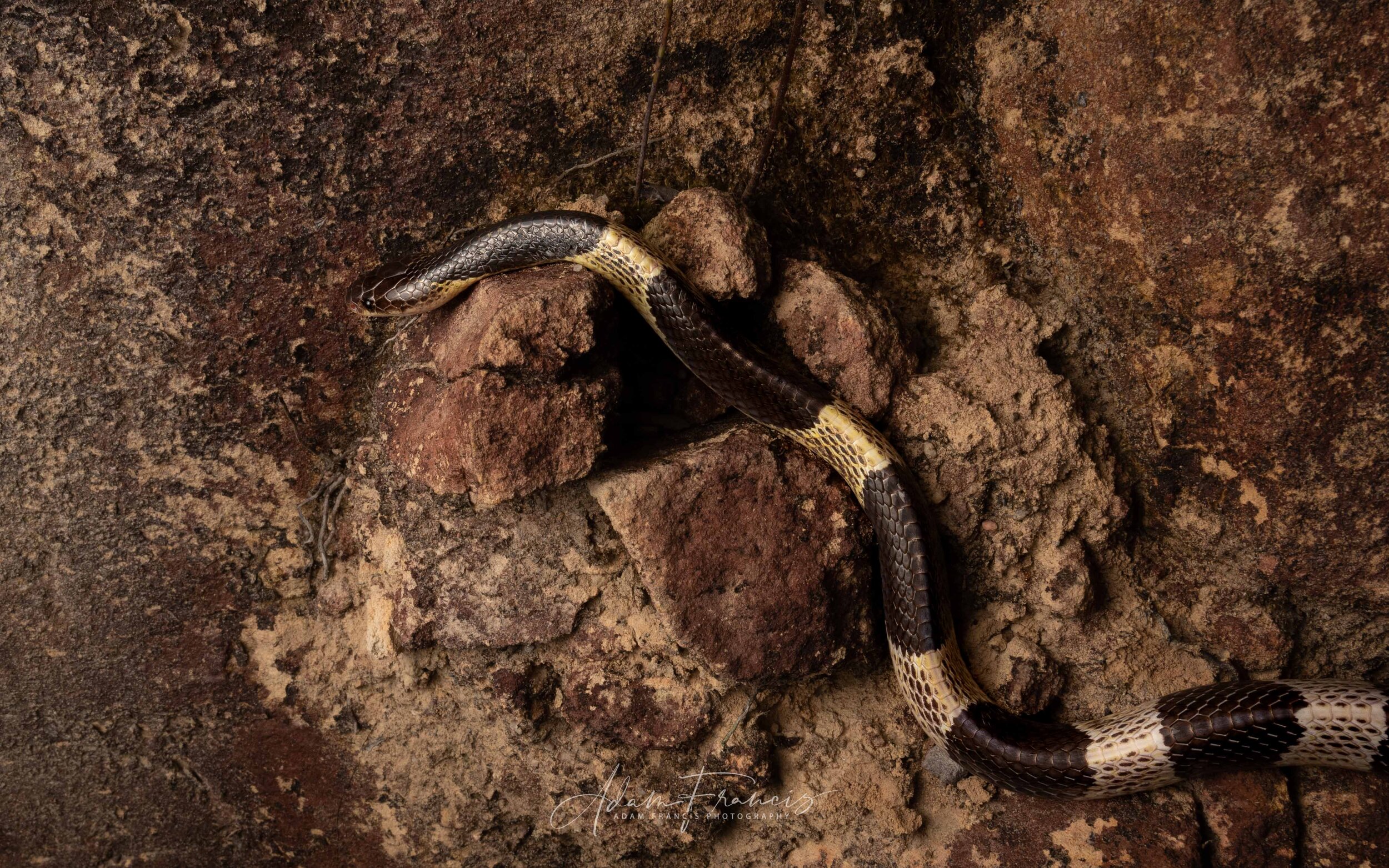
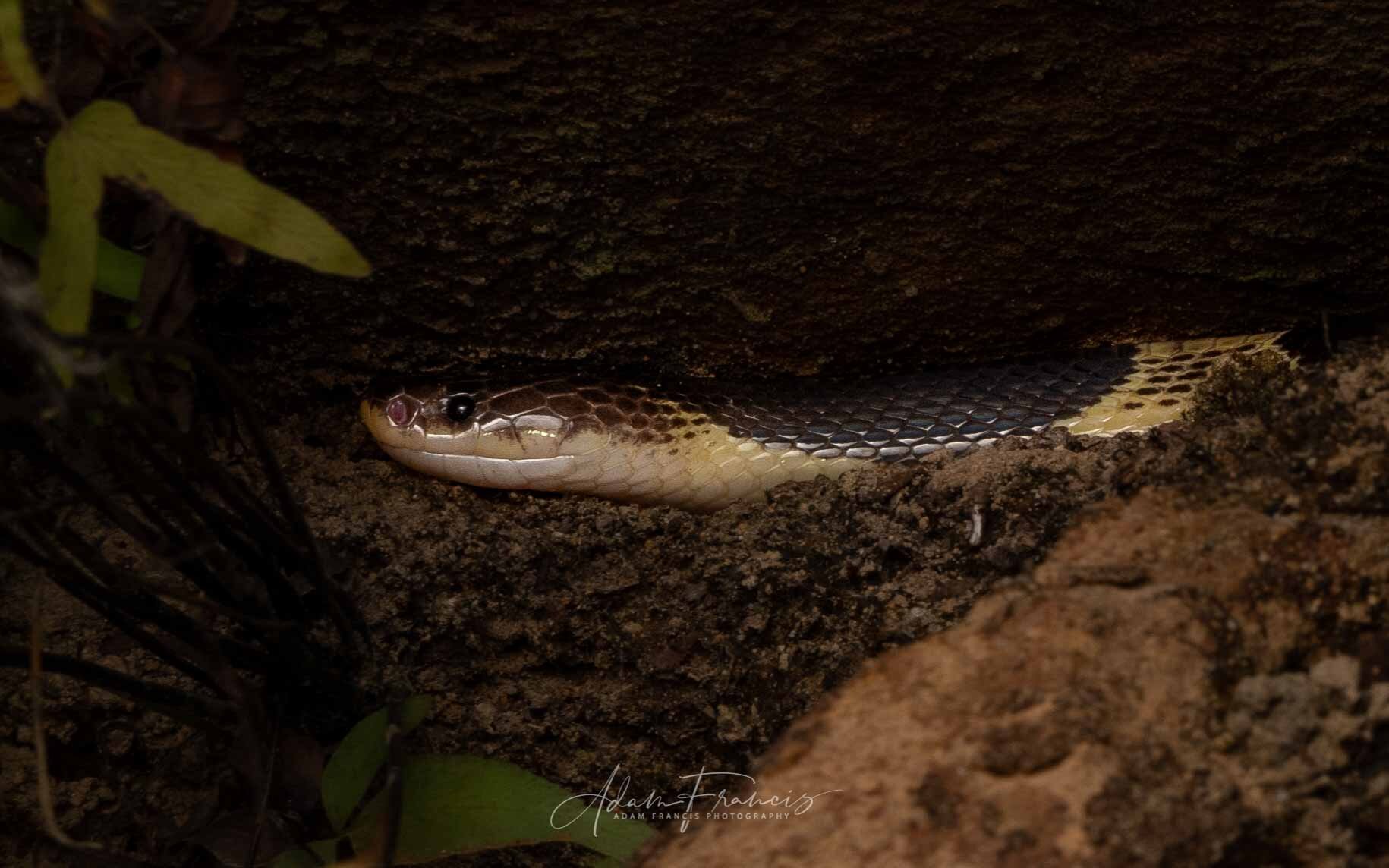
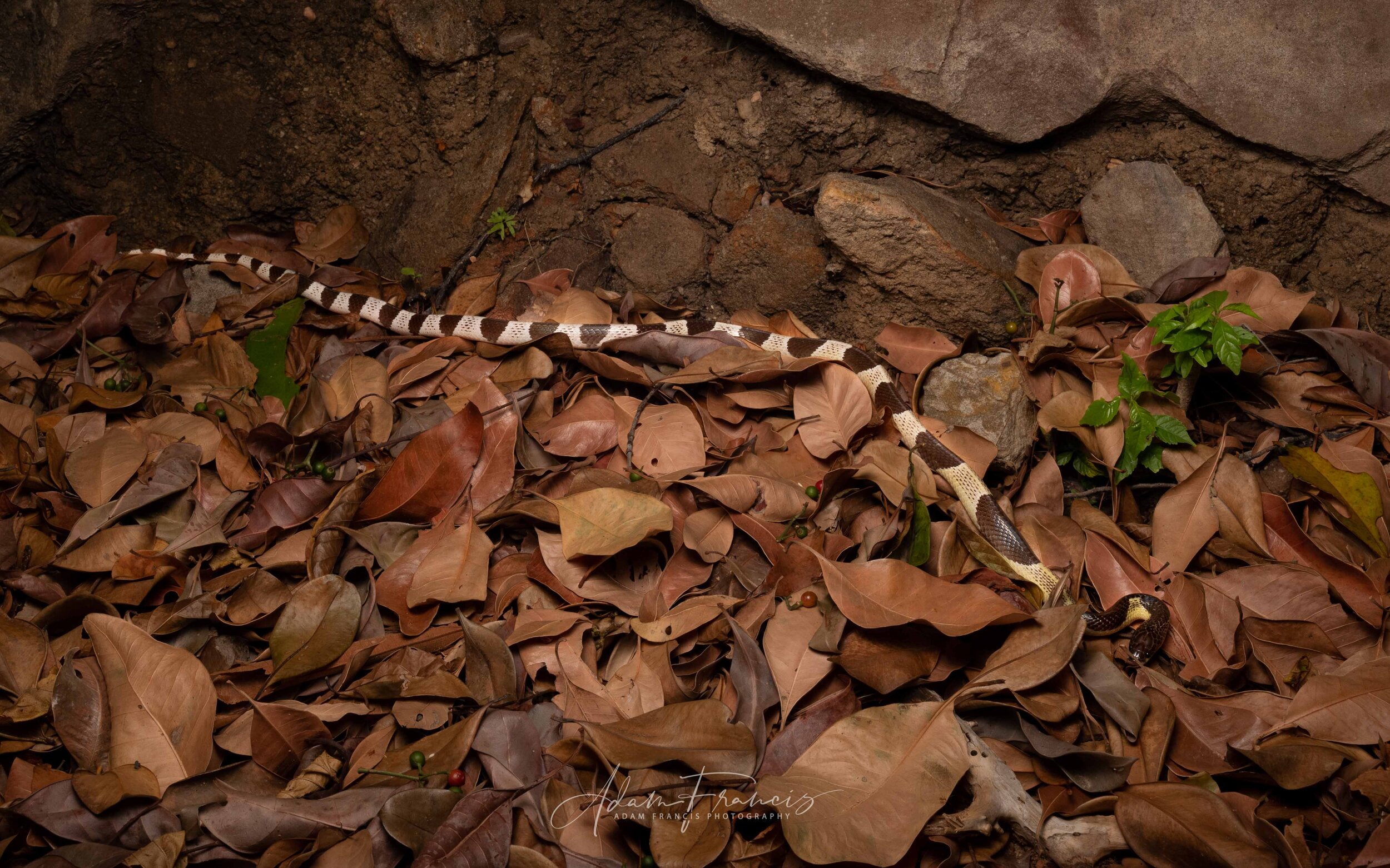
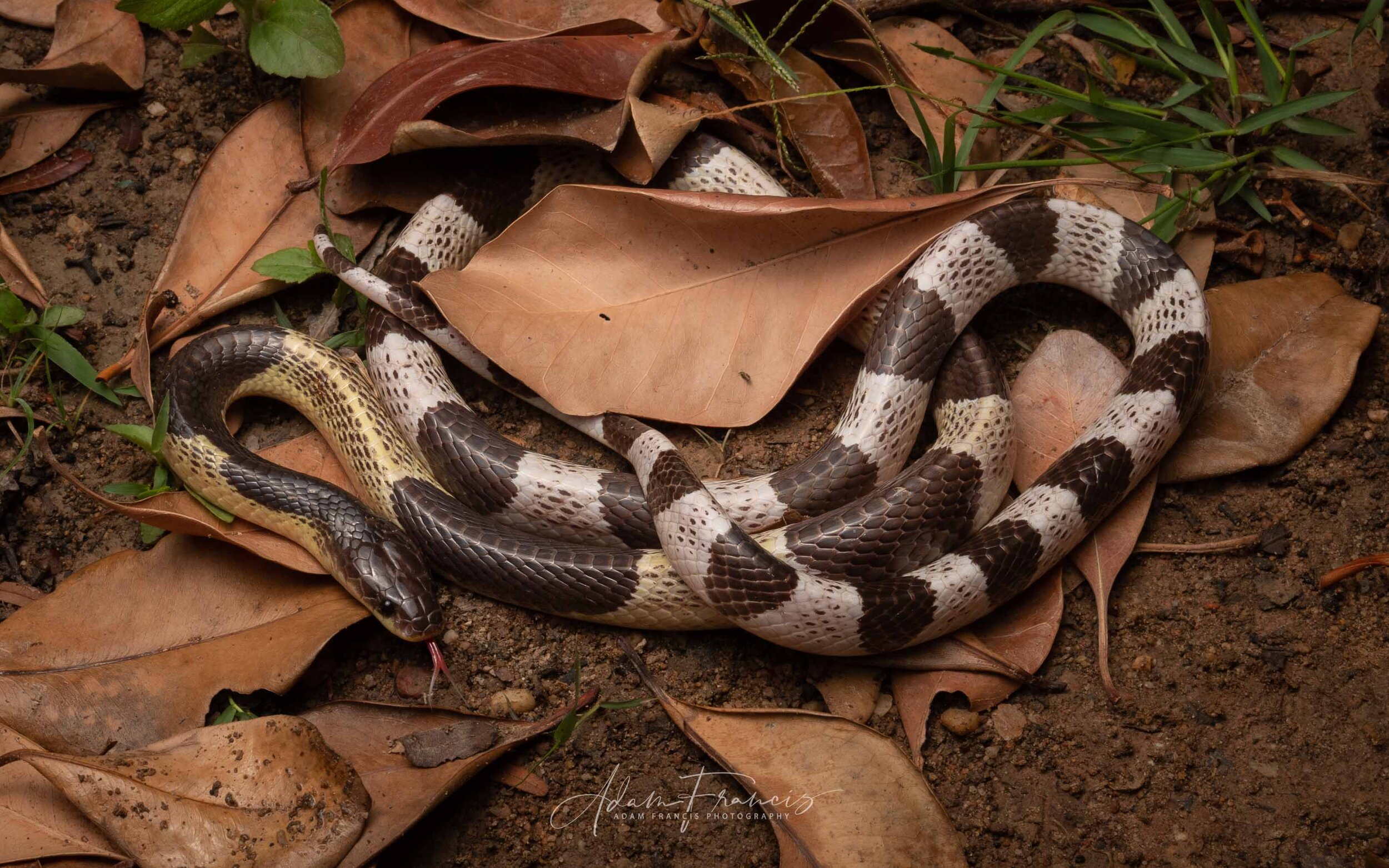
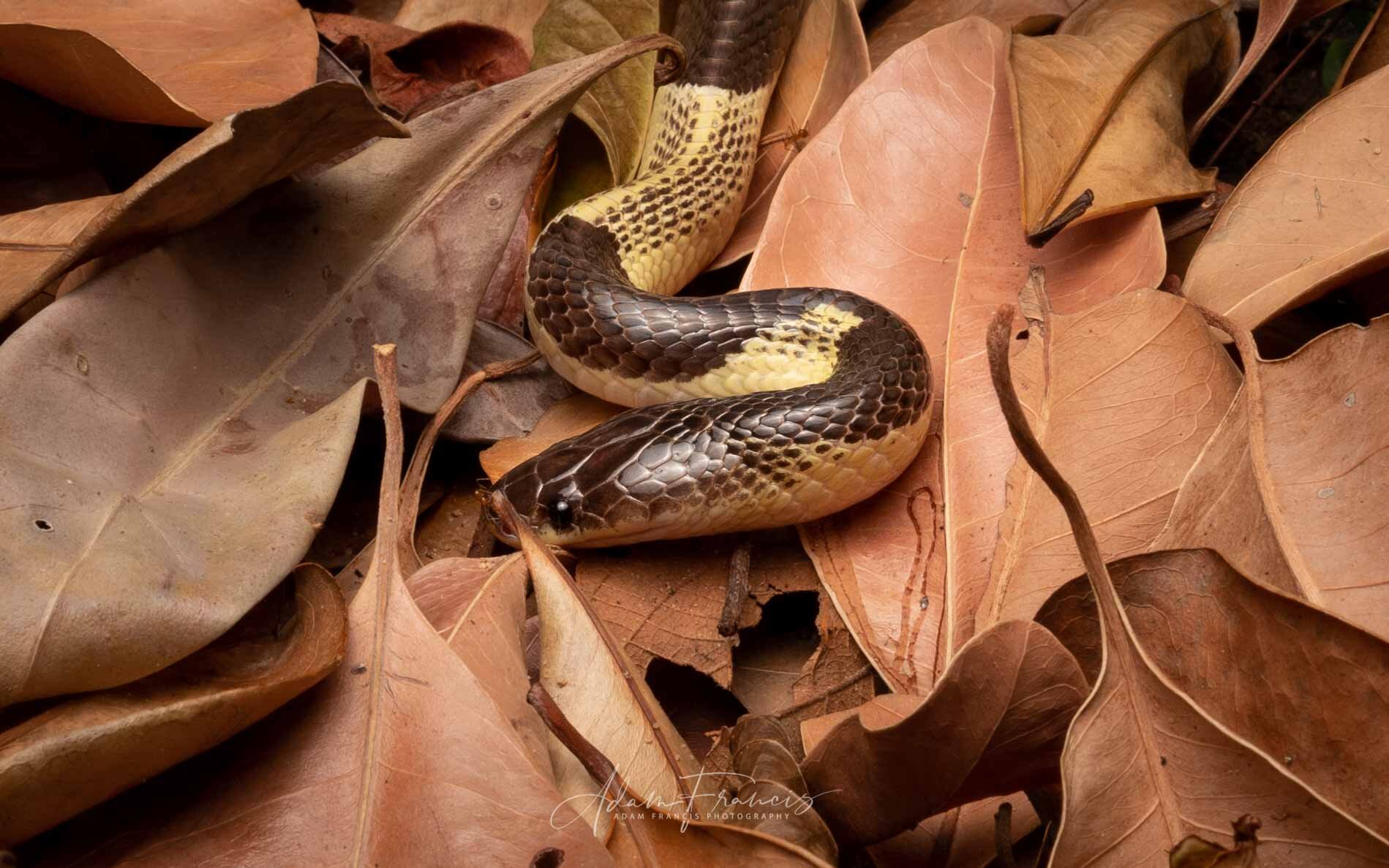
See a video record of this species being found in the field here:
DESCRIPTION
High contrast black and white banding with thick black bands towards the head gradually reducing in width to match the white bands toward the tail. Small unassuming head only slightly wider than the neck with a slender body reaching approximately 2-3cm in diameter and around 1 meter long. Some color variation has been observed with examples of white banding taking on a yellow color especially toward the upper portion of the body. Across different locations in South East Asia variants may be very high white or even all black. Often they are found with black vertebral spots on the white bands towards the lower third of the body.
BEHAVIOR
Active at night and mainly hunts other snakes. Generally docile when approached they are capable of striking from multiple directions and will normally do so without taking much of a defensive stance which can be surprising. Normally slow and deliberate in their movement they are capable of moving quickly if fleeing. This species is also known to have a jaw capable of twisting sharply even when held behind the head increasing the risk of a bite. As one of the most venomous snakes in Asia the Malayan or Blue Krait should never be approached. Its venom is notorious for its delayed effect often taking over an hour before symptoms present leading many bite victims to assume they were not envenomated.
HABITAT
The Malayan or Blue Krait is a terrestrial species often hunting in water culverts, by trail sides and by abandoned structures in forested areas. It can be found all over South East Asia. A less common encounter for most given its nocturnal nature, it is possible to bump into one on the trail and if so they should be give a wide berth and left alone.
MISTAKEN IDENTITY
NO SNAKE SHOULD EVER BE HANDLED BY ANYONE BUT EXPERTS: The Malayan or Blue Krait can be confused with many snakes from the genus Lycodon (wolf snakes) amongst others. It has a small unassuming head and to the uninitiated does not behave aggressively and could easily be assumed to be not dangerous. A Malayan Krait should never be handled or approached and neither should snakes from the genus Lycodon due to the potential for confusing species. A well known herpetologist (reptile and amphibian scientist) was famously killed when reaching into a bag labeled as housing a Wolf Snake which was unfortunately a misidentified Krait. Due to his remote location he died in the field as a result of his envenomation. A Mainland Chinese women was also bitten by a Many Banded Krait she bought online and rendered braindead as a result as recently as July of 2018.

